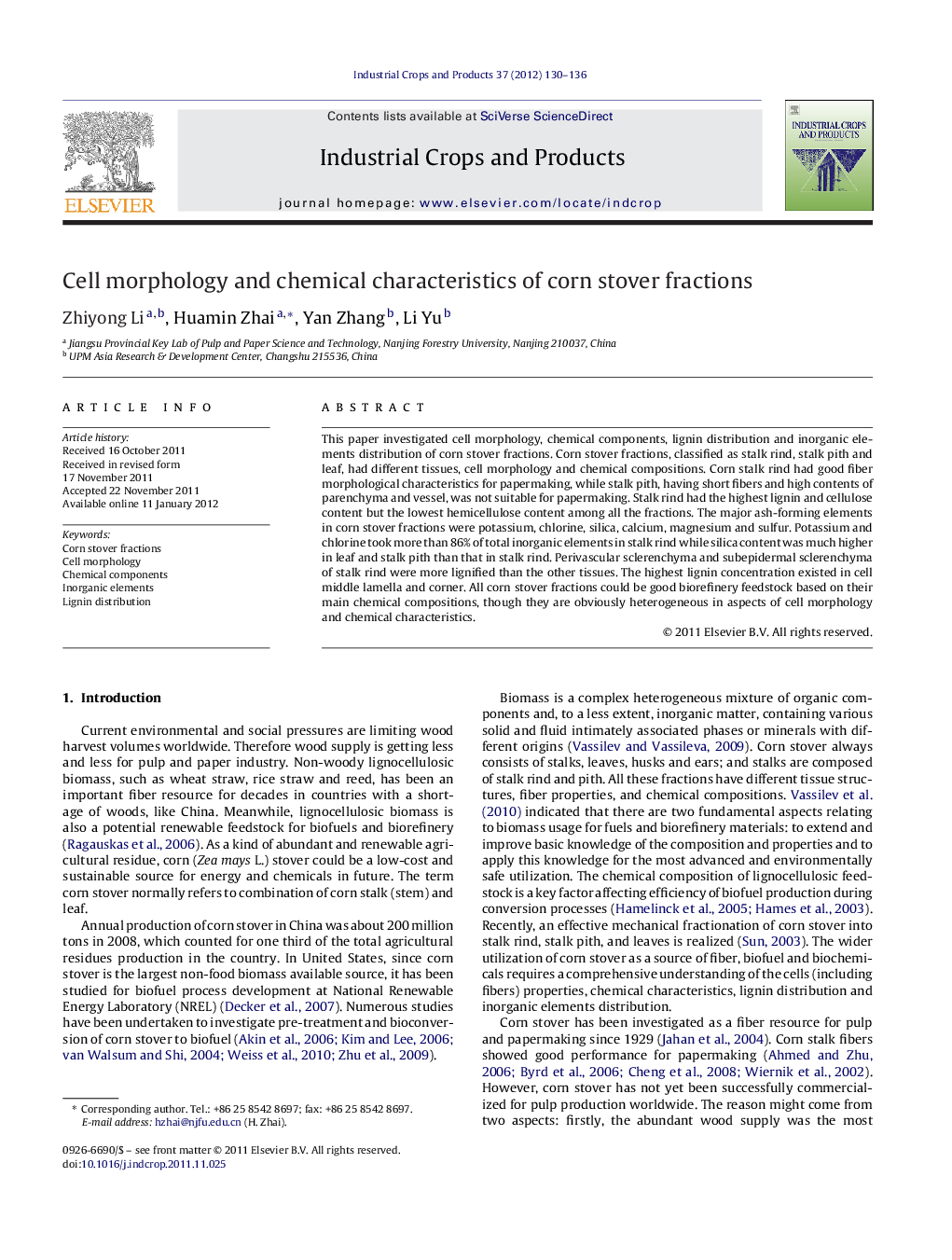| Article ID | Journal | Published Year | Pages | File Type |
|---|---|---|---|---|
| 4514207 | Industrial Crops and Products | 2012 | 7 Pages |
This paper investigated cell morphology, chemical components, lignin distribution and inorganic elements distribution of corn stover fractions. Corn stover fractions, classified as stalk rind, stalk pith and leaf, had different tissues, cell morphology and chemical compositions. Corn stalk rind had good fiber morphological characteristics for papermaking, while stalk pith, having short fibers and high contents of parenchyma and vessel, was not suitable for papermaking. Stalk rind had the highest lignin and cellulose content but the lowest hemicellulose content among all the fractions. The major ash-forming elements in corn stover fractions were potassium, chlorine, silica, calcium, magnesium and sulfur. Potassium and chlorine took more than 86% of total inorganic elements in stalk rind while silica content was much higher in leaf and stalk pith than that in stalk rind. Perivascular sclerenchyma and subepidermal sclerenchyma of stalk rind were more lignified than the other tissues. The highest lignin concentration existed in cell middle lamella and corner. All corn stover fractions could be good biorefinery feedstock based on their main chemical compositions, though they are obviously heterogeneous in aspects of cell morphology and chemical characteristics.
► Corn stover was fractionated to stalk rind, stalk pith, leaves blade and leaf sheath for cell morphology and cell dimensional analysis. ► Corn stover was fractionated to stalk rind, stalk pith and leaves for chemical analysis, including chemical composition, sugar composition of hemicellulose and pectins, and inorganic elements. ► Lignin distribution in corn stalk rind was studied. ► Inorganic elements distribution in corn stalk rind was studied. ► The detailed cell morphology and chemical characteristics study of corn stover fractions laid the foundations for using individual corn stover fraction in biorefinery process.
